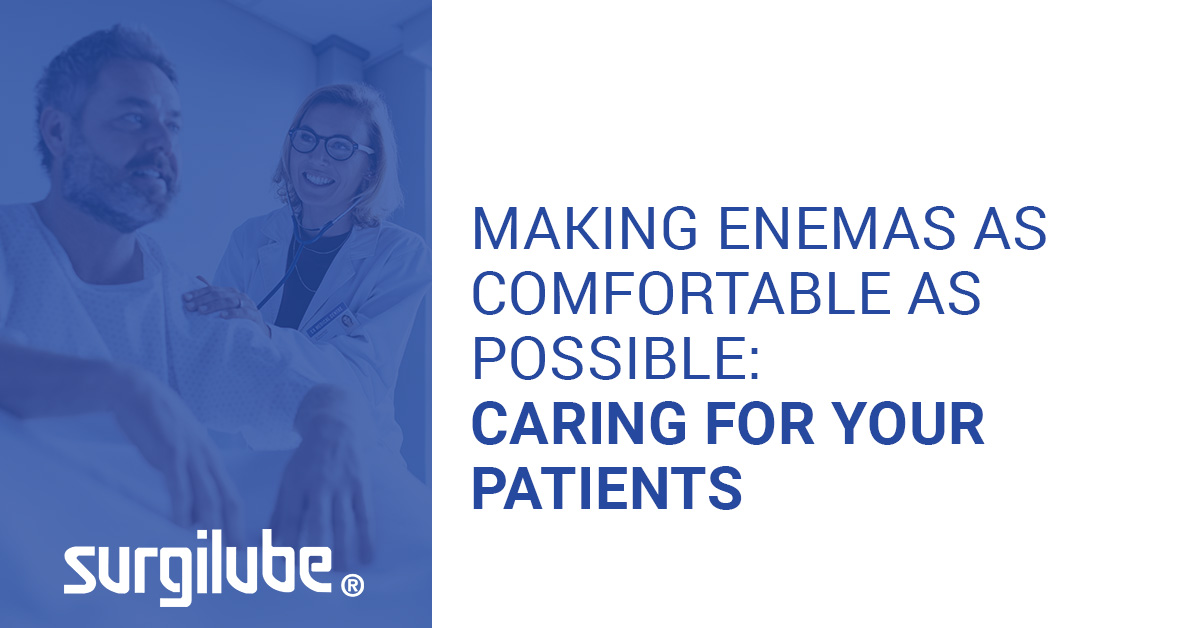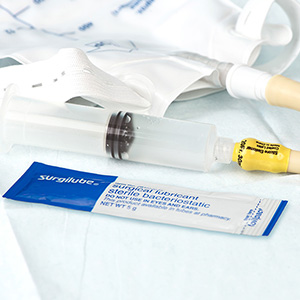Making Enemas As Comfortable As Possible: Caring For Your Patients

An Enema is a procedure that in which a substance is injected into the rectum. Typically it is performed with the intent to expel feces in the event of constipation or impaction, but can also be used to administer medications or imaging dye. Enemas are an invasive procedure that tends to be quite uncomfortable for the patient, both physically and mentally. As a healthcare professional administering an enema to a patient, there are a number of things you can do to make the procedure more comfortable.
Making a patient as comfortable as possible is a standard of care that contributes to more than patient satisfaction, but can also have an impact on the success of procedures and the overall outcome of patient wellness. When patients are uncomfortable, it increases stress and anxiety and can severely impact healing time, recovery, and follow-up. Set your patients up for success by making even the smallest procedures more comfortable and making inherently uncomfortable procedures as comfortable as possible. Here are a few suggestions for making enemas as comfortable as possible.
Prepare the patient.
Patient communication is an essential element for any medical procedure. When patients know what to expect, they are more compliant and it allows for the procedure to go more smoothly for both patient and practitioner. When preparing a patient to receive an enema, it is important to fully prepare them. Inform them of the steps you will take to administer it and what the patient should expect to feel and do. Answer any questions they may have. At the time you begin to administer the enema, remind the patient to relax as much as possible and to remember to breathe.
Protect patient dignity.
As a healthcare professional, you have a duty to protect the privacy and dignity of your patients. This includes providing a private room or drawing a curtain to ensure your patient is not visible to anyone else during the procedure. It is also important to not expose your patient any more than what is required for the procedure being performed. When administering an enema, an important part of protecting the patient’s dignity is ensuring they have access to a private restroom if possible, or an alternate — bedside commode or bedpan — expecting them to evacuate their bowels or enema contents in their bed or a brief is not appropriate. Providing the patient with privacy is expected.
Warm the fluid.
If possible, warm the enema fluid to room temperature or slightly warmer. Not only does this help make the procedure more comfortable, but it also helps prevent shocking the digestive tract with the introduction of cold fluid. Never introduce hot fluid into a patient’s rectum.

Lubricate the device.
Whether using a bottled or bag enema set, it is important to lubricate the parts that will be inserted into the patient’s rectum. Not only does this improve patient comfort by decreasing friction, but it also helps prevent damage to rectal tissue. Compromising tissue integrity can cause pain both at the time of the compromise and again with the evacuation of fecal matter. Additionally, friction tears increase the probability of bowel-induced infection. Surgilube® Surgical Lubricant is a water-based lubricant that offers superior viscosity in a non-staining formula to enhance patient comfort.
Slowly administer the fluid.
The slow introduction of the enema fluid is important for a few reasons. First, it helps to reduce the feelings of pressure, fullness, or bloating, significantly improving patient comfort. Second, it prevents damaging the digestive system. Enemas are used to help lubricate the colon to help the patient discharge bowel matter. When enema fluid is forcibly injected, it can cause the fecal matter to be compacted further and can burst compromised colon tissue. Injecting the fluid slowly allows for the body to more readily accept it.
Ensure toilet is readily accessible.
When administering an enema, it is expected that the patient will need to evacuate their bowels quickly. Depending on the solution used, there may be little to no notice. It is imperative that when an enema is administered that the patient does not have to wait longer than absolutley necessary to access a toilet. Whether this means that they are offered a private restroom or that staff is nearby to help transfer them onto a bedside commode or bedpan. The patient should be instructed not to sit on the toilet prior to the urge to defecate to prevent the leakage of the enema fluid. For this reason, the healthcare provider should never administer an enema and then leave the patient unless the patient is able to safely get themselves to an available toilet.
Receiveing an enema is an embarrassing time for most patients which can make them uncomfortable enough. As their trusted healthcare provider, it is important that you are able to make them as comfortable as possible. The tips above, in addition to using the industry’s leading lubricant, can help improve patient comfort and satisfaction. For more information or to place your order of surgical lubricant, visit us online today!
